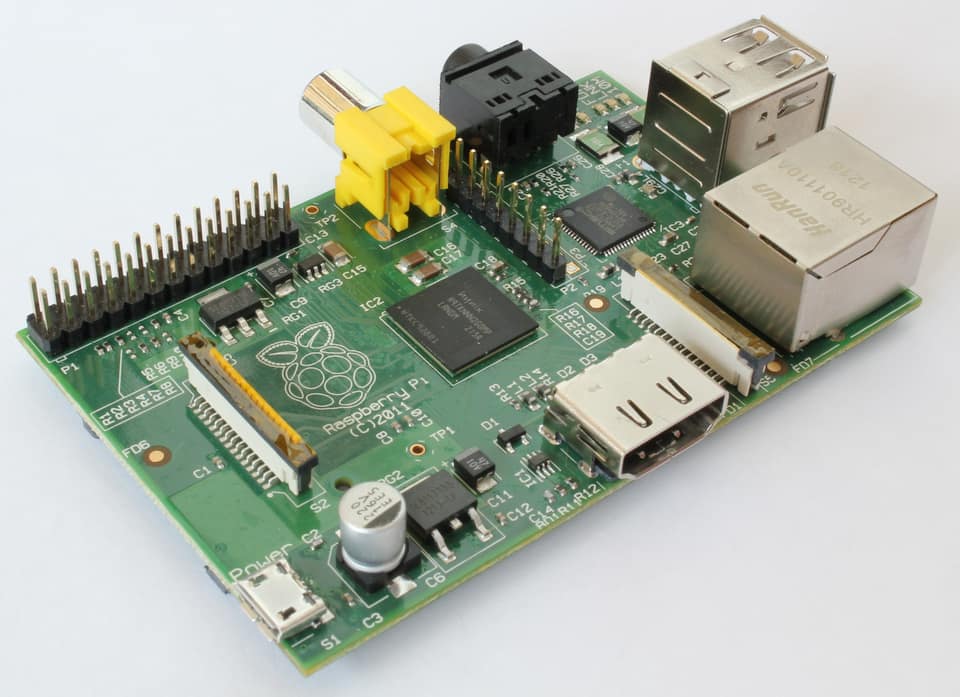Raspberry Pi
After talking about them for weeks on end on my podcast, I finally decided to bite the bullet and order a Raspberry Pi. After all, one only costs $35 and everyone's talking about it like it's the latest thing from Apple (including myself), so what could be the downside?
The Raspberry Pi was primarily designed to help kids learn how to program. But in reality, everyone is buying them because it is a tiny computer that can be used for a wide range of applications. People have made arcade cabinets, home theater pcs, and like all platforms, web servers.

Unfortunately, I didn't quite have everything I needed, and needed to buy a few more things than just the Pi to get it to work. I already had a monitor, HDMI to DVI cable to connect to it, a 32 gig SD card, an old USB hub, and a USB mouse. When I actually got the thing, I realized that the Micro USB plug that's on the Pi is quite different than the Mini USB cables that I have lying around. Fortunately, a correct cable and wall plug was already well on its way. I also bought a cheap keyboard and mouse to use with it. Just to be nice, I also bought a case and heatsinks.
Getting an operating system onto the Pi was easy enough. Choosing one was really easy: the recommended one is a variant of Debian called Rasbian. I've decided my laptop doesn't really like that SD card too much (errors out after a time), but I bought an external card reader a two months ago. The USB implementation is kind of quirky. My desktop keyboard worked fine plugged in directly to the Pi, but would repeat keys if plugged into the hub. It couldn't have been a power issue, since the hub is self powered. The cheap one I bought works without incident, aside from a key literally sticking on the keyboard.
I figured out an interesting way to hook it up. Plug the hub's wall wart in (giving 2.6 amps), plug the Pi into the hub (giving the Pi power), plug the hub into the Pi (giving the Pi extra ports), then the keyboard and mouse into the hub (so they aren't using the Pi's power). Then HDMI and headphones into the Pi, of course. Its sort of weird having two cables going between the hub and Pi, but it works.
One word of warning about Raspberry Pi: its slow. Very slow. Slower than Youtube on FIOS slow. I had to alter the boot parameters to the kernel to slow down the USB refresh rate so moving the mouse around wouldn't cause an MP3 to skip like a record player.
So now its working, but as I expected, it is a solution in search of a problem. I wanted to try to run a PowerPoint on a TV at church. I figured that it would be pretty good at it (at least smooth transitions), since it has enough RAM and a good GPU. Turns out that it's not better than the laptop we already use for that purpose.
So now, I'm looking for a place where a computer would be nice to have, but a computer would be too big. That's the place where a Raspberry Pi would be ideal.
Maybe a set-top box? Use it as a Amazon Instant machine? That would probably work better if Amazon stopped using Flash already.
@Ian: Like our good friend Ryan, I don't watch TV. I don't even have a TV.
You can't complain about this anymore. It's perfect!